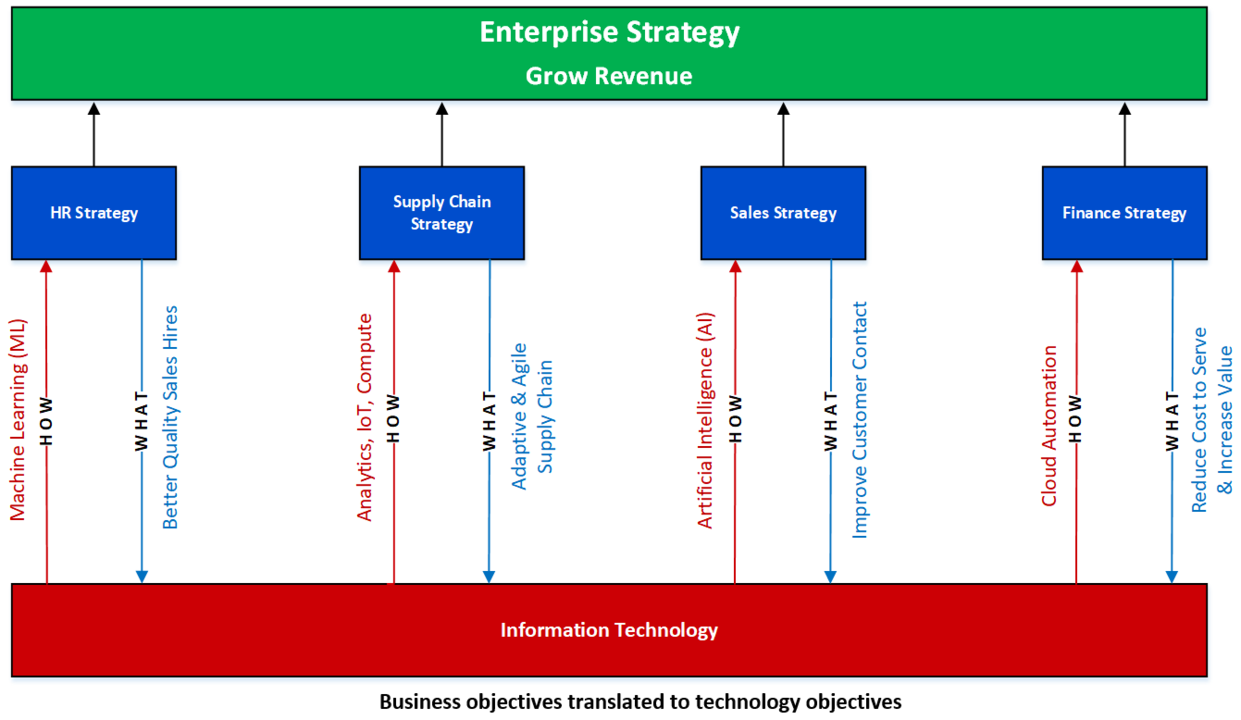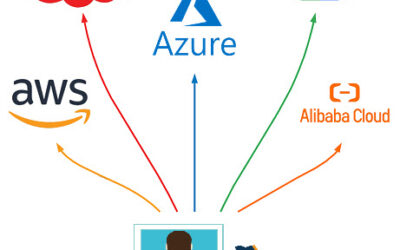 When clients ask me about deploying a new cloud initiative, my first questions are: “Why cloud? What business outcomes are you hoping to achieve?”
When clients ask me about deploying a new cloud initiative, my first questions are: “Why cloud? What business outcomes are you hoping to achieve?”
More often than not, I get a generic answer: We want to adopt cloud to increase agility, reduce cost, increase revenue etc. These are generic benefits you see on vendors sales brochures, but they are neither guaranteed outcomes nor accomplished simply by deploying to the cloud.
In this post, I will provide a high level overview to a common approach to identifying and translating business objectives to cloud-led implementations.
Let’s start with an example: A new CEO sets a new business strategy of increasing revenue by 5% over the next 12 months. This is usually as detailed as the enterprise strategy gets as it is meant to be a high level directive with details supplied by the supporting divisional strategies. CIOs need to align IT activities with divisional strategies to ensure value driven cloud initiatives. Understanding the “WHAT” each business unit is trying to achieve, will help Information Technology illustrate the “HOW” to achieve it.
HR Division
Cloud technology, has changed how HR recruits employees. For example, identifying and hiring skilled sales professionals is a key to increasing revenue yet finding the right sales people is a challenging task. Thus, cloud based Machine Learning (ML) is used to instantly screen and short list top candidates based on company’s profile of successful sales professional. This automation translates to faster recruitment with lower cost and better quality hires, thus improving the overall bottom line.
Supply Chain Division
Organisations are limited to the traditional estimates and averages in planning their inventory and supply chain due to the limited processing power of on premise infrastructure. However, this approach has led to inaccurate forecasting and poor inventory planning due to today’s fast changing market trends, decreasing products life cycle and volatile Geopolitical disruptions. To keep up with all the changes and large amount of data generated, would require significant investments to upgrade on premise infrastructure. As a result, the cloud has become a core component in supply chain strategies.
The cloud offers on-demand, unlimited processing power for the resource hungry analytics algorithm needed to provide accurate forecasts and precise inventory planning. Cloud analytics is used to analyse customer cost to serve, distribution performance, product returns, optimal inventory levels and many more.
Internet of Things (IoT) is another cloud powered technology that is revolutionising the supply chain industry. RFID and GPS sensors can now track products from factory to store shelf. This provides valuable data on inventories, storage temperature, time on shelf and many other variables. This data can help organisations improve their quality controls.
Sales Division
Sales is the bloodline for any organisation and many are embracing cloud technology to gain an advantage. Cloud based Artificial Intelligence (AI) is used to analyse and score sales leads, provide an accurate sales forecast, do most of data entry into CRM and identify existing customers for cross/up sell opportunities. AI enhance sales closing ratio by providing better customer intelligence.
Finance Division
Many CFOs are turning to cloud automation to automate financial processes, streamline account reconciliation and accelerate month-end close and reduce. This closely aligns the bureaucratic accounting calendar with the overall pragmatic business and frees accountants to focus on strategic tasks that drive value for the organisation while reducing cost to serve.
Conclusion
Cloud can give you superior access to leading-edge capabilities (such as Azure Machine Learning), but to realise the benefits, enterprises need to understand how to generate the use cases (a skills and process question), architect the underlying data, and build the capability to execute use cases quickly and track outcomes. None of these things are ‘out of the box’ solutions.
So why do many CIOs find it difficult to closely align with business?
The answer is simple, we “technologists” look at the nuts and bolts of how to get there and overlook what needs to be done to unlock that full value of the cloud adoption. That full story only comes by answering the key question: “Why Cloud?”
Thank you for reading.
Nick


